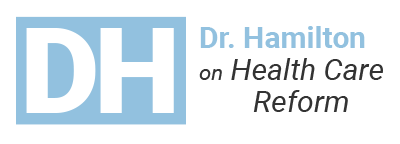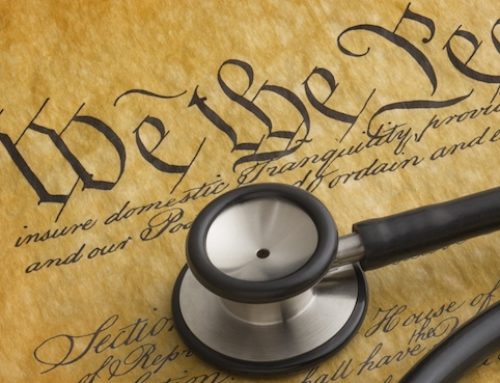The Johnson administration introduced the Medicaid program in 1966 as part of the Social Security Act, in order to cover health care costs for low-income individuals and families. Medicaid now represents $1 out of every $6 spent on health care in the United States. In 2017, Medicaid spending totaled $576.6 billion, with nearly half going to health plans and managed care organizations. 138% of the federal poverty level (FPL) is the standard upper allowable income limit for Medicaid eligibility ($17,000 for singles). The FPL is $12,000 for singles and $25,000 for a family of four, approximately.
Minimum state services must include in-patient and out-patient care, long term care in skilled nursing facilities, basic physician services, clinic labs, and home services. Additional coverage varies from state to states, such as prescription drug coverage, chiropractic care, dental care and immediate care for mental illness. Parents, children, and families comprise 70% of the enrollees and consume 30% of expenditures. The elderly, blind and disabled comprise 30% of enrollees and consume 70% of expenditures.
Medicaid is jointly funded by federal and state governments. Federal funding, known as Federal Medical Assistance Payment (FMAP), varies from 50 to 77% maximum range (average 60%) and is determined annually, based on the state’s per capita personal income. Small changes in FMAP produce huge differences in federal funds. A 0.1% reduction in Texas reduced federal funding by $25 million.
There is no limit on the funds the state can receive from the federal government. This is a “defined benefit” plan rather than “defined contribution”.
This complicated system of funding, which I have only touched upon, creates incentives that can lead to inefficiency, waste, abuse, and fraud, at many levels, resulting in the loss of billions of dollars, often never accounted for. On January 25, 2011, Illinois Governor Quinn signed a Medicaid Reform bill, requiring proof of both income and Illinois residency, among other features, in order to reduce fraud and control expenses.
In June 2011, the Obama administration overruled much of the Illinois reform, in order to encourage states to opt to participate in Medicaid expansion as part of ObamaCare. Subsequent federal reimbursements to states with expanded medical services to expanded Medicaid patients was 100% until 2016, falling to 90% by 2020., much higher than prior Medicaid enrollees received. This increased the amount of money flowing from the federal government to the states and provided little incentive for the states to screen applicants carefully for eligibility.
In 2014, the federal government stopped doing audits to determine Medicaid eligibility for state enrollees. In the November 18, 2019 issue of the Wall Street Journal, Blaze and Yelowitz reported that renewed auditing revealed that improper Medicaid payment to the states rose from 6% to 20% and probably exceeded $75 billion during the intervening four years.
In addition, Medicaid expansion also created a new group of Medicaid beneficiaries – working-age, single adults with incomes up to $17,000. Also, in many cases, pre-expansion enrollees were improperly enrolled with expansion enrollees, thus further increasing federal payments to the states.
It gets worse. Studies by the National Bureau of Economic Research and the U.S. Census Bureau’s American Community Survey found that large numbers of patients in expansion states with incomes between 138% and 250% of the FPL were improperly enrolled in Medicaid.
The numbers of improper enrollees and of the excess Medicaid expenditures vary from state to state. Blase and Yelowitz estimate 2.3 to 3.3 million patients were improperly enrolled in 5 states they thought were “hot spots” of irregularity. They believe the overall numbers for unnecessary Medicaid costs are bound to be much higher.
Many physicians in private practice will not see Medicaid patients, because Medicaid payment is less than the overhead cost of the office visit. Therefore, many patients do not enroll in Medicaid, but go to hospital Emergency Rooms instead, at a much greater cost. The EMTALA law requires hospitals to treat all patients. The hospitals’ high cost and low payment for treating these patients are passed to the paying public at enormous cost, which John Cochrane refers to as a “transferred subsidy”.
America is right to provide health care for its medically indigent, but these flaws in the programs must be rectified in order to provide care and control cost.
Blase and Yelowitz recommend: 1) Reform Medicaid financing by making fixed, rather than open-ended, federal payments to states, i.e. defined contribution rather than defined benefit; 2) improper payments to states should be repaid to the Center for Medicare and Medicaid Services (CMMS) on behalf of federal taxpayers; 3) CMMS should require immediate eligibility redeterminations in those states and regions with egregious Medicaid abuses; and 4) The Congressional Budget Office should evaluate why initial cost estimates of Medicaid expansion were so inaccurate. Additionally, in 2020, some Medicaid patients may be able to change to private insurance by using Health Reimbursement Arrangements (HRA) plans to purchase health insurance.





